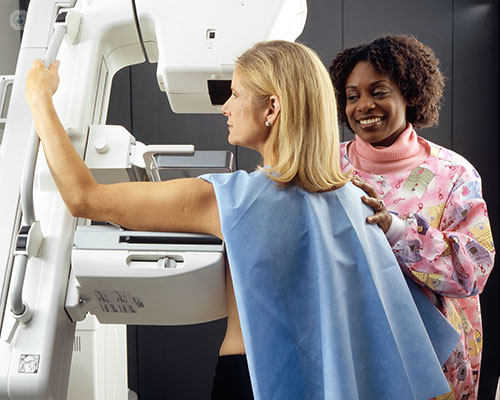


A mammography, or mammogram is a breast cancer screening to look for signs of breast cancer in women who otherwise show no signs or symptoms, but can also be used when a breast lump has been detected. Mammography uses x-ray imaging to detect signs of breast cancer in the early stages before they become noticeable.

What happens during a mammography?
A mammography takes two x-ray images of each breast. Each breast is scanned individually, and involves placing the breast on a clear plate on the x-ray machine, where it is gently compressed by another clear plate to flatten the breast. The x-ray images are then taken of each breast.
It may be advisable to wear a skirt or trousers and a separate top, rather than a dress as it will be necessary to strip to the waist. The test is usually carried out by a female mammographer. The images only take a few seconds each time.
Why should you have a mammography?
Breast cancer is the most common form of cancer in the UK, with around one in eight women diagnosed with breast cancer during their lifetime.
Breast cancer screening is really important in finding signs of breast cancer early. An early diagnosis of breast cancer greatly improves the prognosis.
What are the risks of mammography?
Mammograms can often cause anxiety, especially if something is found, which can lead to extra testing. Mammography is not perfect, and often signs of breast cancer may be found which prove to be incorrect, otherwise known as a false positive. Conversely, the opposite can occur where signs are missed, giving a false negative.
Despite this, the test is very worthwhile, as the benefits greatly outweigh the negatives, and detecting breast cancer early is the desired outcome, other than receiving an all clear.
What happens after a mammogram?
Following the mammography test, you should receive your results within two weeks. Around one in 25 women are called back for further testing, with a further one in four women going on to be diagnosed with breast cancer.
Although this can be a very scary time if you are diagnosed, as previously mentioned, an early diagnosis is still preferred as the cancer can then be treated. The recovery rate is high in those patients who have been diagnosed early.